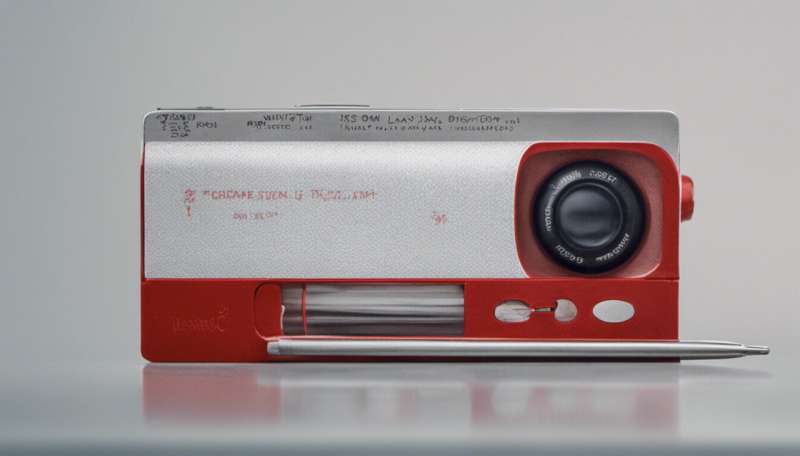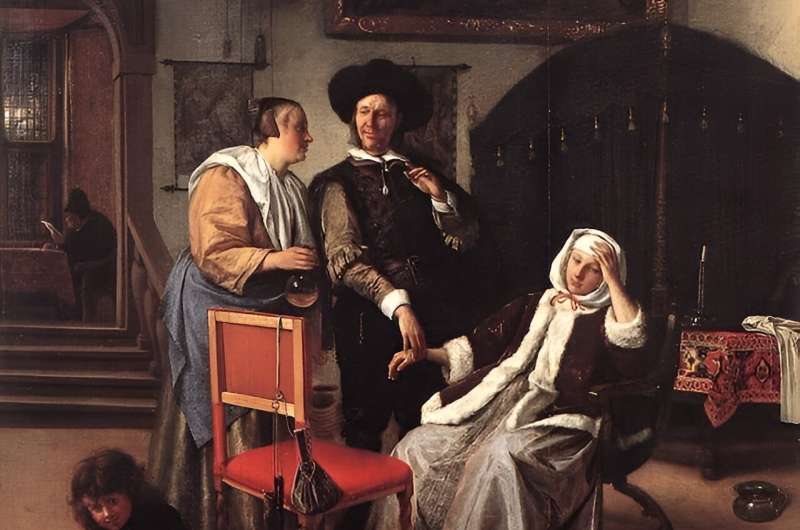This article has been reviewed according to Science X's editorial process and policies. Editors have highlighted the following attributes while ensuring the content's credibility:
fact-checked
trusted source
written by researcher(s)
proofread
A brief history of pregnancy tests: From toads and rabbits to rosewater

Today, knowing if you are pregnant is usually straightforward—you pee on a stick and then wait for the lines to appear. Tests for women to use themselves at home were first marketed in the 1960s. They work by detecting the hormone human chorionic gonadotropin (hCG) in urine—which is produced primarily by cells in the placenta during pregnancy.
Blood tests can tell you the answer a mere 11 days after conception and urine tests a few days later. Of course, a positive pregnancy test doesn't necessarily lead to a baby—one in five will end in miscarriage. Yet that positive test is often seen as the start of a journey into parenthood.
But things were very different in the past. The obvious signs of missing periods or food cravings could mean pregnancy. But until the pregnancy was much more advanced there was no way of knowing that they weren't due to illness or menopause.
From ancient Greece onwards, it was believed that women would know if they were pregnant because they felt the womb close after sex—which of course is impossible. Not least because at such an early stage neither fertilization nor implantation has occurred.
But that didn't stop people trying to find out for sure. The 4th-century BC Hippocratic medical text Aphorisms suggested giving a drink of hydromel at bedtime. This was a mixture of wine, water and honey that was said to cause pain and rumbling if the woman had conceived.
Kim Phillips, professor of history at the University of Auckland, has studied Secrets of Women, a 13th-century medical text which told readers that if a girl's breasts pointed down, it meant she was pregnant. This was thought to be because "at the moment of impregnation the period blood moves upwards to the breasts."
The role of urine
Today, urine is the key to getting a firm answer. But while it may seem like a modern method, that's not the case. Indeed, three ancient Egyptian papyri show that urine was being used as long as 4,500 years ago.
These papyri describe either a woman who wants to know if she will conceive or a woman who might be pregnant, urinating on wheat and barley (or spelt) seeds over the course of several days. If the barley sprouts first, it's a boy but if the wheat grows, it's a girl. If none of the seeds sprouts, then she isn't pregnant.

Many variations of tests using urine have been found throughout history. Indeed, in a number of medical recipes from the medieval period onwards, a needle placed in a woman's urine was said to turn red or black if she was pregnant. In the 16th century, "needle" was misread as "nettle," leading to the suggestion that a woman should leave a nettle in some of her urine overnight and if it has red spots on it in the morning then she is pregnant.
These tests could be done under the supervision of a doctor, or on one's own. Since it was founded in 1518, women healers had been banned by the Royal College of Physicians of London from practicing medicine. That included uroscopy (medical examinations of the urine), but some women did it anyway.
In the early 17th century, a woman known as Mistress Phillips—possibly a midwife—was taken to court for using uroscopy to diagnose pregnancy. Catherine Chaire, a woman illegally practicing medicine in London in the 1590s, had her own method: she claimed she could "diagnose pregnancy by washing clothes with red rosewater and soap."
Modern methods
The focus on urine in many tests prefigures what we know today. And variations on these urine-based tests were repeated in medical writing up to the 17th century. If a woman's urine was kept in a sealed container for a few days, "certain live things" would be seen in it, according to the Compleat Midwives Practice (1656). Another option was to boil the urine—white streaks meant she was pregnant.
It was in the 1930s that there were the first suggestions that the seed tests, described in ancient Egypt as magical, shouldn't be dismissed. Research testing the theory found that 70% of the time, pregnant women's urine did indeed make the seeds grow—although there wasn't any correlation with the sex of the child. Using the urine of men, or women who weren't pregnant, had no effect. Clearly, there really was a unique substance in the urine of pregnant women.
This 20th-century research proved that all those historical tests—whether involving seeds or needles—were on to something far more reliable than special drinks, washing clothes in rose water, or checking the breasts.
Yet another way of using urine was introduced in the 1920s and 1930s. First, mice or rabbits were injected with a pregnant woman's urine and killed to see how their ovaries had changed. Later, live toads (the preferred species was the African clawed toad) were used instead and injected with women's urine. If the woman was pregnant then the female toads would release eggs.
Research on this continued in the 1950s. But all these methods were expensive and not 100% reliable. Plus they weren't so good for the mice or toads. And in the 1960s, new work on antibodies led to the pregnancy test we know today.
Pregnancy has always played a key part in women's history. Being able to get pregnant was essential to issues of inheritance and succession. And the history of pregnancy testing shows that people were looking in the right direction, even before they had the tools to be sure of their findings.
This article is republished from The Conversation under a Creative Commons license. Read the original article.![]()





















